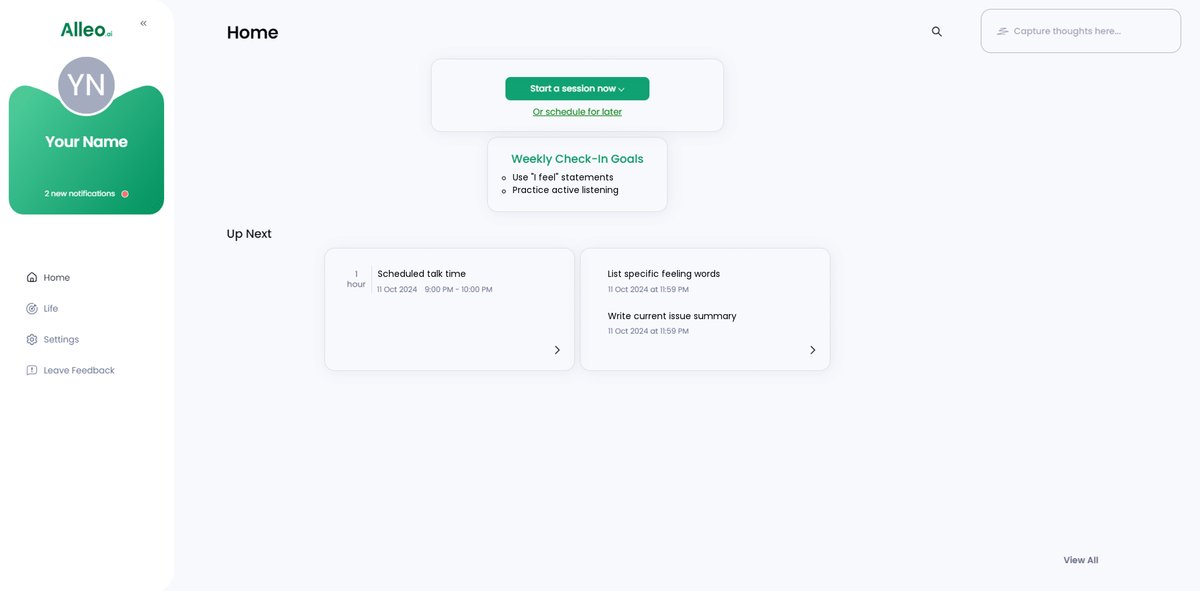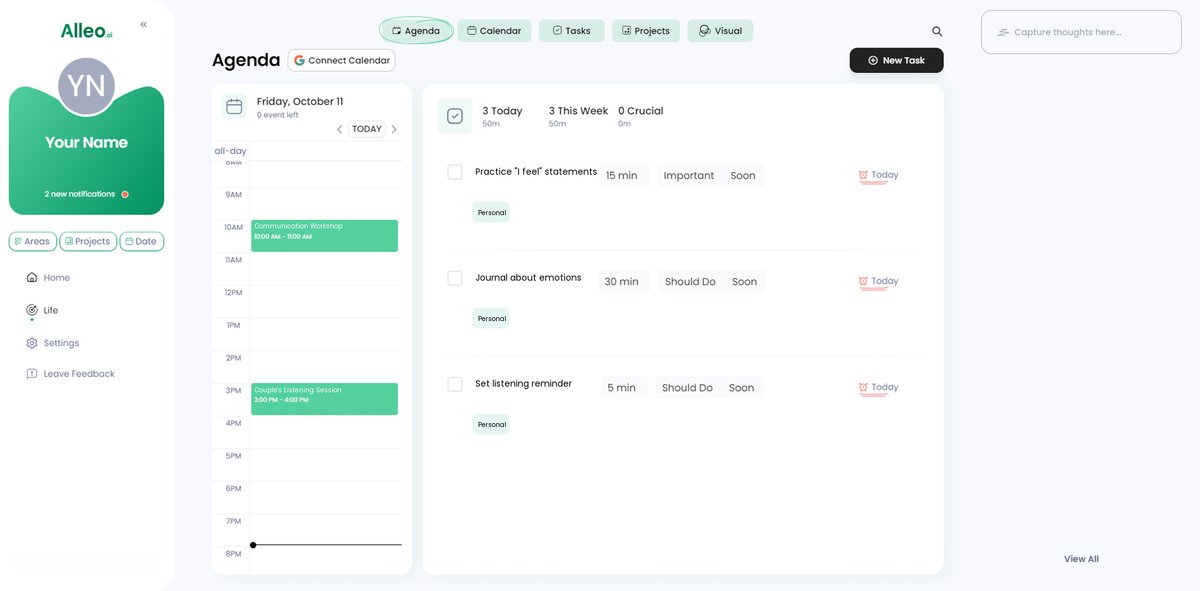How to Communicate Feelings Without Blame: A Comprehensive Guide for Couples
Are you struggling with expressing emotions without blame in your relationship?
As a life coach, I’ve helped many couples navigate the complexities of effective communication in relationships. Often, men find it particularly challenging to express their needs without their partners perceiving it as an attack, leading to difficulties in emotional intelligence for couples.
In this article, you’ll discover strategies for expressing emotions without blame or accusation. You’ll learn non-violent communication techniques for couples, such as using “I” statements in relationship conversations and active listening skills for partners to foster understanding and build emotional intimacy through communication.
Let’s dive into these healthy ways to express frustration in relationships and explore conflict resolution without blame.

Understanding the Struggle to Communicate Without Blame
Why is it so difficult to express emotions without blame? Many men feel misunderstood when sharing their feelings, leading to defensive reactions from their partners. This challenge in expressing emotions without accusation often hinders effective communication in relationships.
This miscommunication often spirals into arguments, creating emotional distance. Couples may benefit from learning non-violent communication techniques to improve their interactions.
In my experience, people often find it challenging to articulate their needs without sounding accusatory. This can result from past experiences, where expressing vulnerability was met with criticism or rejection. Developing emotional intelligence for couples can help overcome these barriers.
When feelings are not communicated effectively, the emotional impact can be profound, leaving both partners feeling unheard and unsupported. Active listening skills for partners are crucial in addressing this issue.
Additionally, poor communication can erode trust and accountability in the relationship. This makes it even harder to resolve conflicts and build a stronger bond. Exploring healthy ways to express frustration in relationships and practicing empathetic communication strategies can significantly improve relationship dynamics.

Key Steps to Communicate Feelings Without Blame
Overcoming this challenge requires a few key steps. Here are the main areas to focus on to make progress in expressing emotions without blame:
- Use “I feel” Statements to Express Emotions: Start sentences with “I feel” to own your emotions, a crucial technique in non-violent communication for couples.
- Practice Active Listening Without Interrupting: Set aside dedicated time for uninterrupted conversations, enhancing active listening skills for partners.
- Identify Needs Behind Feelings Before Speaking: Reflect on your feelings to understand the underlying needs, improving emotional intelligence for couples.
- Separate Observations from Interpretations: Describe situations factually without personal judgments, a key aspect of effective communication in relationships.
- Focus on Current Issues, Avoid Past Conflicts: Discuss only the current issue during conflicts, promoting conflict resolution without blame.
- Take Responsibility for Your Own Emotions: Acknowledge your role in conflicts and express willingness to change, demonstrating healthy ways to express frustration in relationships.
- Use Nonverbal Cues to Show You’re Listening: Maintain open body language and show empathy, enhancing empathetic communication strategies.
Let’s dive in to explore these techniques for expressing emotions without accusation!
1: Use “I feel” statements to express emotions
Using “I feel” statements is essential for expressing emotions without blame in relationships, promoting effective communication and emotional intelligence for couples.
Actionable Steps:
- Start your sentences with “I feel” to own your emotions and avoid sounding accusatory, a key non-violent communication technique for couples.
- Incorporate specific feeling words, such as sad, mad, or glad, to clearly articulate your emotions, enhancing emotional intimacy through communication.
- Practice role-playing scenarios with a friend to become comfortable using “I feel” statements, improving your active listening skills for partners.
Explanation:
These steps matter because they help you own your emotions and prevent your partner from feeling attacked, fostering healthy ways to express frustration in relationships.
By using “I feel” statements, you create a safer space for open communication, facilitating conflict resolution without blame.
According to Psychology Today, expressing feelings effectively often begins with two simple words: “I feel.”
This approach lays the foundation for constructive conversations and fosters mutual understanding, enhancing empathetic communication strategies in relationships.

2: Practice active listening without interrupting
Practicing active listening without interrupting is crucial for fostering understanding and reducing conflicts in relationships. This skill is essential for expressing emotions without blame and building emotional intimacy through communication.
Actionable Steps:
- Set aside dedicated time: Schedule uninterrupted time for important conversations to ensure both partners can share their thoughts fully, promoting effective communication in relationships.
- Use nonverbal cues: Show attentiveness by nodding, maintaining eye contact, and using gestures like leaning slightly forward, which are key active listening skills for partners.
- Summarize and reflect: Repeat back what your partner has said to confirm understanding before responding, a technique that supports expressing emotions without accusation.
Explanation:
These steps matter because they help create a supportive environment where both partners feel heard and valued, facilitating healthy ways to express frustration in relationships.
According to Lissy Abrahams, active listening can significantly improve communication and reduce misunderstandings, fostering a stronger connection. This approach aligns with non-violent communication techniques for couples.
By implementing these techniques, you can enhance empathy and collaboration in your relationship, setting the stage for more productive and harmonious interactions. This practice is fundamental to conflict resolution without blame and developing emotional intelligence for couples.

3: Identify needs behind feelings before speaking
Identifying the needs behind your feelings before speaking is crucial for expressing emotions without blame and fostering effective communication in relationships.
Actionable Steps:
- Reflect on your emotions: Take a moment to understand the underlying needs driving your feelings, a key aspect of emotional intelligence for couples.
- Write down your thoughts: Jot down your needs and feelings to organize your thoughts before discussing them with your partner, facilitating non-violent communication techniques for couples.
- Use “I need” statements: Clearly express your needs by starting with “I need” to communicate directly and effectively, employing “I” statements in relationship conversations.
Explanation:
These steps matter because they help you communicate more clearly and avoid misunderstandings, supporting conflict resolution without blame.
According to Uplift Counseling and Mediation, understanding and expressing needs can transform how conflicts unfold and improve relationship dynamics.
By identifying and expressing your needs, you create a foundation for more meaningful and constructive conversations, promoting healthy ways to express frustration in relationships.
This approach fosters empathy and clarity, making it easier to resolve conflicts and build emotional intimacy through communication.

4: Separate observations from interpretations
Separating observations from interpretations is crucial to avoiding misunderstandings in communication and expressing emotions without blame in relationships.
Actionable Steps:
- Describe situations factually: Focus on what actually happened without adding personal judgments or assumptions, using non-violent communication techniques for couples.
- Keep a journal: Record daily interactions to practice distinguishing between observations and interpretations, enhancing emotional intelligence for couples.
- Discuss observations with your partner: Ask for their perspective to ensure a shared understanding and avoid misinterpretations, utilizing active listening skills for partners.
Key benefits of separating observations from interpretations:
- Reduces misunderstandings and conflicts
- Promotes clearer, more objective communication
- Encourages a shared reality between partners
Explanation:
These steps matter because they help create clear and factual communication. This reduces the risk of misinterpretation and conflict, supporting effective communication in relationships.
According to Traci Ruble, separating facts from interpretations is essential for healthy communication and relationship dynamics. This approach fosters mutual respect and understanding, leading to more constructive dialogues and expressing emotions without accusation.
By implementing these techniques, you can enhance clarity and prevent unnecessary arguments, promoting conflict resolution without blame in your relationship.

5: Focus on current issues, avoid past conflicts
Focusing on current issues and avoiding past conflicts is vital for maintaining productive and respectful conversations in relationships, especially when expressing emotions without blame.
Actionable Steps:
- Agree on discussing only the present issue: Commit with your partner to address only the current topic to avoid reopening old wounds, using effective communication in relationships.
- Create a “parking lot” list: Write down unresolved issues and agree to discuss them later, ensuring they don’t derail the current conversation, a key aspect of non-violent communication techniques for couples.
- Take breaks if needed: Pause the conversation if past conflicts resurface, and refocus on the present issue after a short break, demonstrating emotional intelligence for couples.
Explanation:
These steps matter because they help prevent conversations from becoming overwhelmed by past grievances and support expressing emotions without accusation.
According to Lissy Abrahams, focusing on current issues can maintain open communication and foster resolution, which is essential for conflict resolution without blame.
By staying present, you can avoid unnecessary arguments and build a stronger, more empathetic relationship through active listening skills for partners.
This approach helps keep discussions on track and promotes a healthier way to handle conflicts, emphasizing expressing emotions without blame in relationship conversations.

6: Take responsibility for your own emotions
Taking responsibility for your own emotions is crucial for fostering healthy communication in relationships and expressing emotions without blame.
Actionable Steps:
- Acknowledge your role: Reflect on how your actions contribute to conflicts and express a willingness to change, focusing on effective communication in relationships.
- Engage in self-reflection: Use practices like meditation or journaling to understand your emotional triggers and improve emotional intelligence for couples.
- Apologize sincerely: When you recognize that your actions have hurt your partner, offer a heartfelt apology, utilizing “I” statements in relationship conversations.
Explanation:
These steps matter because they help you create a more accountable and empathetic relationship dynamic, supporting conflict resolution without blame.
According to Michael Swerdloff, taking responsibility for your own feelings is a sign of maturity and can transform conflict resolution, aligning with non-violent communication techniques for couples.
By owning your emotions, you set a positive example and encourage your partner to do the same, promoting active listening skills for partners.
This approach enhances mutual respect and paves the way for deeper connection and understanding, building emotional intimacy through communication.

7: Use nonverbal cues to show you’re listening
Using nonverbal cues is essential for demonstrating attentiveness and empathy in your communication, especially when expressing emotions without blame in relationships.
Actionable Steps:
- Maintain open body language: Keep your arms uncrossed and lean slightly forward to show engagement, enhancing active listening skills for partners.
- Mirror your partner’s emotions: Reflect their feelings through facial expressions to convey understanding, a key aspect of emotional intelligence for couples.
- Use touch for support: Offer a gentle touch, like holding hands, to express empathy and reassurance, fostering effective communication in relationships.
Effective nonverbal cues for active listening:
- Maintaining eye contact
- Nodding to show agreement or understanding
- Using facial expressions to convey empathy
- Adjusting your posture to face your partner directly
Explanation:
These steps matter because nonverbal cues can significantly enhance the quality of your interactions and support expressing emotions without accusation.
According to Greater Good Magazine, nonverbal communication is crucial for showing empathy and building connections.
By incorporating these techniques, you create a more supportive and understanding environment in your relationship, facilitating conflict resolution without blame.
Implementing nonverbal cues can lead to deeper emotional connections and more effective communication, contributing to building emotional intimacy through communication.
Enhance Your Communication with Alleo
We’ve explored how to communicate feelings without blame and express emotions without accusation, but did you know Alleo can help you master these skills? Alleo’s AI coach provides tailored coaching to improve emotional communication and develop effective communication in relationships.
With a free 14-day trial, you can start improving your relationship today by learning non-violent communication techniques for couples.
Setting up an account is simple. Create a personalized plan with our coach, who will follow up on your progress and keep you accountable, helping you build emotional intelligence for couples.
Alleo’s coach offers full coaching sessions like any human coach. Receive support via text and push notifications to stay on track with your active listening skills for partners and practice using “I” statements in relationship conversations.
Ready to get started for free and learn conflict resolution without blame?
Let me show you how to enhance your empathetic communication strategies!
Step 1: Log In or Create Your Account
To begin your journey towards better communication, log in to your existing Alleo account or create a new one to access personalized coaching that aligns with the communication strategies discussed in this article.

Step 2: Choose “Improve overall well-being and life satisfaction” as your goal
Select “Improve overall well-being and life satisfaction” from the goal options to address the root of communication issues and enhance your relationship. This foundational goal will help you develop the emotional intelligence needed to express feelings without blame, fostering a more harmonious and fulfilling partnership.

Step 3: Select “Personal” as Your Focus Area
Choose “Personal” as your focus area to address communication challenges in your relationships, aligning with the article’s emphasis on expressing feelings without blame and improving emotional connections with your partner.

Step 4: Starting a Coaching Session
Begin your journey with Alleo by scheduling an intake session, where you’ll discuss your communication goals and create a personalized plan to improve how you express feelings without blame in your relationship.

Step 5: Viewing and Managing Goals After the Session
After your coaching session, open the Alleo app to find your discussed goals conveniently displayed on the home page, allowing you to easily track and manage your progress in improving communication without blame.

Step 6: Adding Events to Your Calendar or App
Track your progress in applying these communication techniques by adding reminders and milestones to the Alleo app’s calendar and task features, helping you stay accountable and measure your improvement over time.

Wrapping Up: Communicating Feelings Without Blame
We’ve covered a lot of ground on how to communicate feelings without blame. Remember, it’s about creating a safe space for honest conversations and expressing emotions without accusation.
By using “I feel” statements, practicing active listening skills for partners, and identifying your needs, you can foster better understanding. Separating observations from interpretations and focusing on current issues helps keep discussions productive, enhancing effective communication in relationships.
Taking responsibility for your emotions and using nonverbal cues show empathy and engagement. These non-violent communication techniques for couples can transform your relationship dynamics.
I understand it’s challenging, but you can do this. Try implementing these emotional intelligence strategies for couples and see the difference in your conflict resolution without blame.
And don’t forget, Alleo is here to support you in expressing emotions without blame. Sign up for a free trial to enhance your communication skills and build emotional intimacy through communication even further.